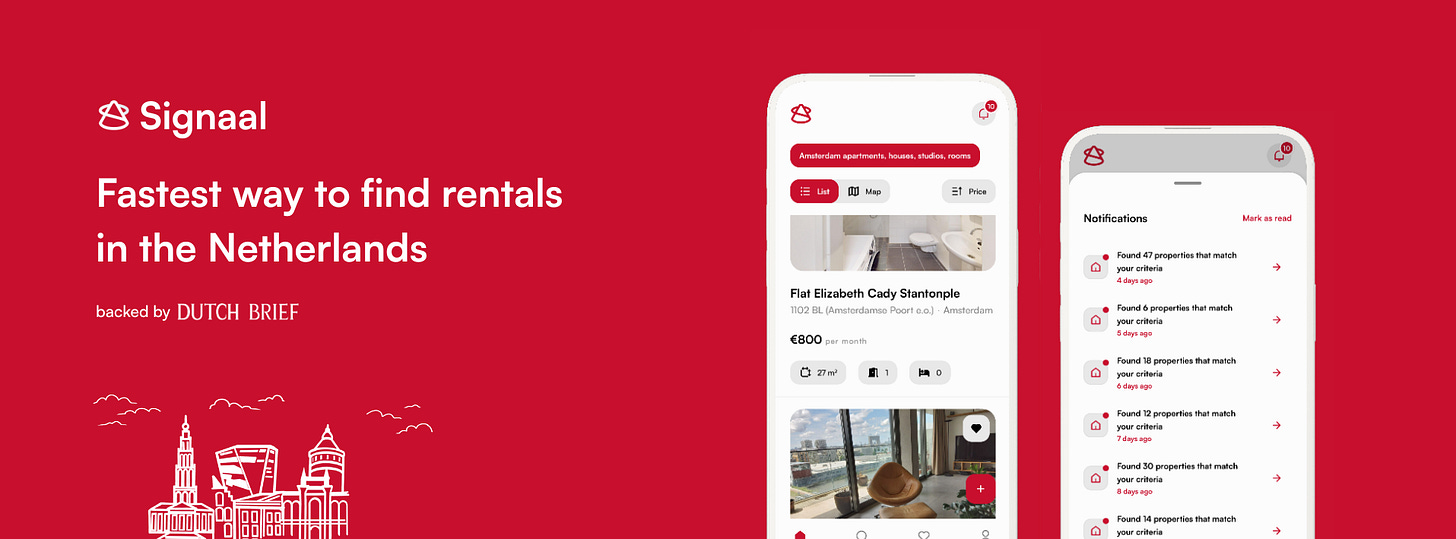Level Up Your Dutch in Groningen (A2–B1)
Use language cafés, free meetups, and smart app habits to turn basic Dutch into confident conversations, plus local programs and weekly routines that actually stick.
Before we begin, a quick shoutout to our sponsor, Signaal:
Looking for housing in the Netherlands?
Signaal helps you skip the endless scrolling by tracking new listings from trusted platforms and alerting you when something matches your needs, all in one easy-to-use app.
If you already understand a menu and a letter from the gemeente but freeze in real conversations, the jump from A2 to B1 is mostly about time on task and varied input. Groningen is unusually good for that mix: formal courses to keep you honest, multiple language cafés every week, and free one-to-one or small-group practice that costs only your time.
Start with a Backbone
A short, structured course sets the pace and gives you a teacher who spots mistakes you can’t hear yet. The University of Groningen Language Centre runs general Dutch courses from A1–C1 (including A1→A2 and A2→B1), with in-person and online options and a free “Introduction to Dutch” MOOC if you’re warming up after a break. Schedules are block-based (Sept/Nov/Feb/Apr; intensive options in January/summer), so you can align them with study or work. If you’re at Hanze, the Hanze Language & Culture Centre follows CEFR levels and is designed for international students balancing coursework.
Then make speaking unavoidable: Classroom hours alone rarely push you to B1; Groningen’s language-café circuit does. At the Forum library (the main public library at the Forum building), you can join the Taalcafé / conversation lessons and short courses—easy, friendly settings where no one cares if your genders or word order wobble. The RUG Language Centre also curates a page of local cafés and tips, and you’ll find student-run meetups like Language Café Groningen (often organised with ESN/associations) and groups such as Café de las Lenguas for broader language exchange. If you prefer a small circle, the International Welcome Centre North (IWCN) hosts weekly “Let’s Talk Dutch!” sessions in Groningen at beginner and B1+ levels—bookable, one-hour, low-pressure, and with a regular facilitator.
Add Free One-to-One Practice
For many learners, the breakthrough is a consistent “language buddy.” In the city, you can request Humanitas Taalmaatjes: volunteer language coaches who meet individually or in small groups. It’s part of a national ecosystem supported by Het Begint met Taal, which provides methods and materials for volunteers; the Groningen branch runs large numbers of active pairings. Expect real-life talk: paperwork, doctor’s appointments, cycling dramas, job interviews.
Balance Paid Study with No-Cost Input
A smart week mixes one or two course sessions with two free practice blocks. Think: Tuesday class, Thursday library café, Saturday buddy chat, and one hour of app work across the week. This keeps momentum without burning cash. The city’s International Groningen portal even points you to language tables where you rotate by level—useful when you’re hovering between A2 and B1.
What About Apps?
Use them, but thoughtfully. At A2 your biggest gains come from automating the basics (separable verbs, past tense, question word order) and cementing core vocabulary you’ll meet daily: housing, health, work/study, shopping, transport. Apps are great when you set tiny, specific targets (e.g., 15 minutes of listening or verb drills before bed) and then speak the results the next day at a café or with your buddy. If you track streaks, track speaking streaks too: “days I spoke Dutch to a human.”
Lean on Groningen’s English-friendly support: The IWCN events calendar stays busy (socials, info sessions, and Dutch conversation hours), and Make It in the North gathers career-oriented Dutch resources—including the Language Centre routes for professionals—so you can tie language to real goals like internships or part-time jobs.
Two Bottlenecks to Expect (and how locals beat them)
First, listening speed: native Dutch speakers compress vowels and shuffle clitics, which the classroom audios never quite prepare you for. Counter that with live input you can control: radio/podcasts at 0.9× speed on the bike; local TV with Dutch subtitles; short YouTube explainers rewound until the particles click.
Second, fear of being slow: Groningen is patient, but queues are not. Use “entry lines” that buy you time: “Mag ik even in het Engels beginnen? Ik leer Nederlands.” Then repeat back in Dutch what you can. People will mirror your effort.
If you’re aiming at B1 for work.
Clarify the target: B1 general vs. B1 job-specific (healthcare, customer service, lab work). The Language Centre offers strands for medical professionals and tailored tracks; Hanze and employers sometimes co-finance courses. Combine that with a volunteer front-desk shift, a sports club role, or a weekly buddy task (e.g., practice calls to a gemeente or GP). The “admin Dutch” you pick up from real tasks sticks better than textbook set pieces.
A Groningen Practice Loop that Works
Choose one course, one café, and one buddy, then keep them for eight weeks. Add a small content diet you actually enjoy: Forum loans graded readers and audiobooks; cafés give you natural small talk; buddies give feedback you won’t get in class. When motivation dips, book a tangible event (Noorderzon talkback, a museum tour, a club meeting) that forces you to use Dutch for an hour in the wild. The aim isn’t to sound native; it’s to be quick, clear, and courteous, which Dutch people tend to reward.
B1 comes from showing up: a steady course, a café you actually attend, and real conversations about your life. Groningen supplies the venues; you add the habit. Give it eight focused weeks and your Dutch will feel less like study, more like living.




